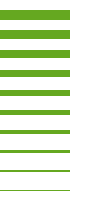https://doi.io-warnemuende.de/10.12754/msr-2004-0061
doi:10.12754/msr-2004-0061
© Author(s) 2004. This work is distributed
under

Dieses Werk ist lizenziert unter einer Creative Commons Namensnennung - Nicht kommerziell - Keine Bearbeitungen 4.0 International Lizenz.
Mikrobieller Abbau von partikulärem organischen Material in der tiefen Wassersäule
Abstract. Microbial remineralisation processes on sinking particulate organic material (POM) in the water column together with primary production in the euphotic zone are responsible for the particle flux to the sea floor. During the descent particle-associated bacteria and protozoa are exposed to different environmental conditions as decreasing temperature, increasing pressure, decreasing substrate concentrations and - in some regions - variable oxygen conditions. Additionally, free-living bacteria are due to their adaptation to certain environmental conditions involved in POM degradation processes and therefore important for carbon flux. The aim of this study was to examine physiological reactions of bacteria from different water depths to different environmental conditions (temperature, pressure, oxygen) and their influence on degradation of POM and on the bulk chemical composition of the particulate and dissolved phase via microcosm experiments. Therefore, natural sedimenting and suspended particles and bacterial populations from different water depths were collected in the Arabian Sea, in the north-eastern Atlantic and in the Gotland Deep of the Baltic Sea. Manipulation of environmental conditions in the experiments generally lead to a reduction of particle degradation demonstrating the adaptation of the resident microbial community to their environment. However the microcosm experiments with natural POM and natural bacterial populations proved to be unsuitable to quantify particle flux. Compared to empirically determined sinking fluxes from literature the experimentally determined POM degradation rates were substantially higher. However the microcosm experiments were a useful tool to examine the qualitative influence of the environmental factors on bacteria, their metabolic rates and the particle composition (C:N ratio).
Abstract. Der Partikelfluß spielt eine wichtige Rolle für den Stofftransport im Ozean, den Kohlendioxidgehalt der Atmosphäre und ist Lebensgrundlage für die Tiefseefauna. Entscheidend für die Menge der Partikel, die den Meeresboden erreicht, sind heterotrophe Remineralisierungsprozesse der partikelassoziierten und freilebenden Mikrobengemeinschaften in der gesamten Wassersäule. In dieser Arbeit wurde der Einfluß von verschiedenen Temperatur-, Druck- und Sauerstoffbedingungen, denen sinkende Partikel ausgesetzt sind, auf die bakteriellen Umsatzraten von partikulärem organischen Material und die daraus resultierenden chemischen Veränderungen durch Mikrokosmosexperimente bestimmt. Natürliche Partikel und Bakterienpopulationen wurden in verschiedenen Wassertiefen in der Arabischen See (Herbst 1995, Frühjahr 1997), im Nordostatlantik (Herbst 1996) und in der Gotlandsee (Frühjahr/Sommer 1996) gesammelt. Abnehmende Temperaturen, zunehmender Druck und in manchen Seegebieten variierende Sauerstoffbedingungen, hatten einen negativen Einfluß auf die bakteriellen Umsatzraten, was sich in der Verlangsamung des Partikelabbaus widergespiegelte. Dabei erwiesen sich Mikrokosmosexperimente mit natürlichen Partikeln und Bakterienpopulationen für die Bilanzierung des Kohlenstoffflusses ungeeignet, da die experimentellen Abbauraten aufgrund der Versuchsbedingungen bedeutend höher waren als die aus Sinkstoffflüssen empirisch bestimmten. Sie waren aber ein nützliches Mittel, um die qualitativen Auswirkungen der untersuchten Umweltfaktoren auf die Bakterien, ihre metabolischen Raten und die Partikelzusammensetzung (C:N-Verhältnisse) zu untersuchen.
